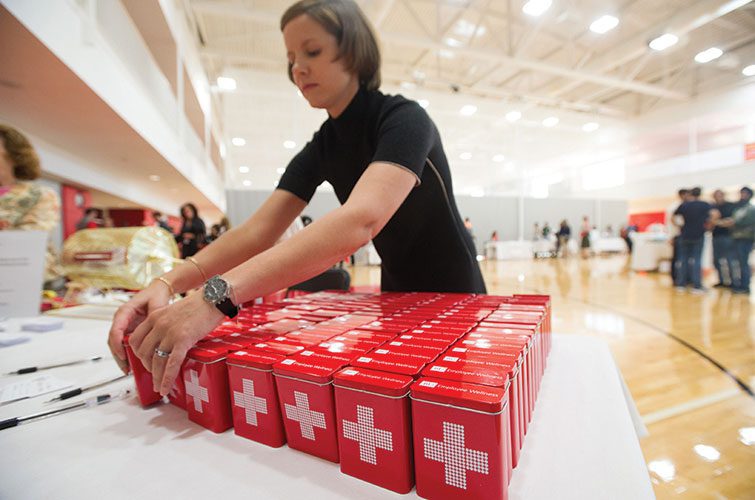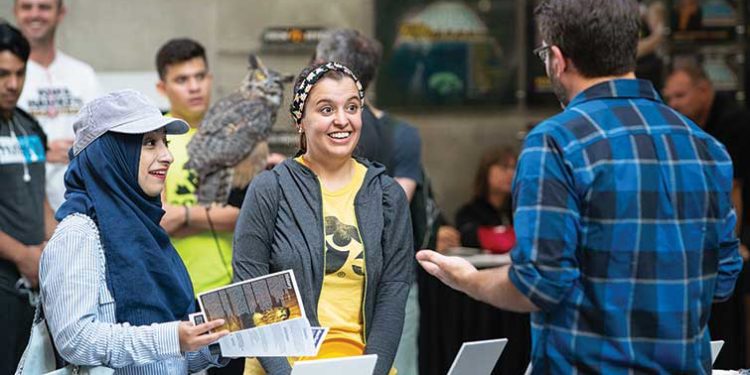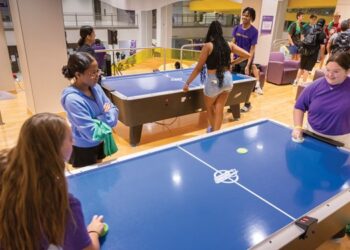Campus Recreation departments are known for being key partners on campus. Through events, student employment, wellness initiatives and providing more spaces for campus communities to experience the benefits of recreation, it’s necessary to not only form these partnerships and show the value in them, but to also maintain them.
At Boston University (BU), a few key partnerships include Human Resources to provide an employee wellness program, research labs to host a variety of projects focused on exercise and recreation with various academic programs, and the BU Hub to offer co-curricular learning programs focused on working in groups and developing group projects.
Tim Moore, the executive director of Physical Education, Recreation and Dance at BU, said partnerships are formed to create synergy and work toward common goals. When maintaining these partnerships and showing the value in them, Moore shared his suggestions for showing partner appreciation:
- Use digital displays and newsletters in your facility to recognize and appreciate your partners.
- Include partner testimonials and data on co-sponsored programs in your annual reports to central administration and share the same with them. The idea here is to demonstrate the impact and synergy created through partnering.
- Bring partner teams together to appreciate them, and have discussions around purpose and mission to look at additional intersections and opportunities.
- Survey partner program participants to assess effectiveness, continuity and satisfaction.
The most common and natural partnership on campus for many rec centers is Academics. As the largest employer on campus, Jay Souza, the director of Recreation and Wellness at the University of South Florida, said student employment is one of the main ways his department connects with other areas on campus, such as Academics.
“We have a very rich and deep co-curricular involvement, and recreation can be viewed as one of those places where students can go and get practical experiences,” said Souza. “There’s always a waiting line to get in to work for us and we tie that into academic performance. There are a lot of related skills and development students can pick up while they’re with us and then take with them.”

Another common partnership on campus, often encouraged by proximity, is Athletics. JT Timmons, the director of Recreational Services at the University of Iowa, said his department has learned a lot about Athletics because they share a number of facilities, even managing a number of them. “A struggle for some folks in working with Athletics is they may get a win during the season and want to practice, resulting in time that wasn’t really scheduled in a shared facility,” said Timmons. “We have to work with that, while at the same time supporting the entire student body. We have to be consistent with our messaging — that we’re there to support all students.”
Timmons further elaborated you can’t expect a partnership to take care of itself, rather you constantly have to nurture and revisit these relationships to maintain the benefits on both sides. Additionally, acknowledging turnover in different positions and departments on campus is necessary and requires networking and meeting new people. “As a director, that’s one of the key responsibilities in maintaining these partnerships, as well as helping staff establish partnerships across campus and gain exposure,” he said.
According to Timmons, a significant partner is someone who communicates well, and who is firm but fair. Plus, when you make good decisions and have a good reputation, it helps the maintenance for partnerships be that much easier.
“We’re constantly in communication with people,” said Timmons. “I think we have to be transparent and sometimes we have to compromise, but we have to be willing to look beyond our own myriad and realize this may not be ideal for us, but if we can compromise, then maybe our individual and collective messages are stronger in the end.”
Partnerships During COVID-19
“Pivot,” was the motto for Timmons and his team during the coronavirus pandemic, and his team wasn’t alone. Campus recreation departments across the country were consistently pivoting and trying to do what they do best — provide recreation and wellness services to their community.
Timmons said this was the perfect time to rethink campus partnerships. “In times where you have to cover some financial losses, we really need to look at what’s most critical, because everything we do is important but not equally important, and we have to accept that,” he said.
Before his facility officially closed, Timmons shared a moment when his team decided to sacrifice. They asked themselves how they could be a good campus partner and help other departments. “We had gym wipes we used in our facilities to clean machines, and we essentially wiped our inventory out in rec services so academic departments could have them for faculty when they were still teaching on campus,” he said. “We didn’t want to do that, and we had to replenish, but we saw it was for the greater good of the university and we’ve been commended for partnering and helping during the pandemic.”
All in all, a partnership can be like a seed that you plant, nurture and give room to grow. “Sometimes it means you have to move it out of the direct sunlight,” described Timmons. “It’s just something that constantly has to be worked on.”










